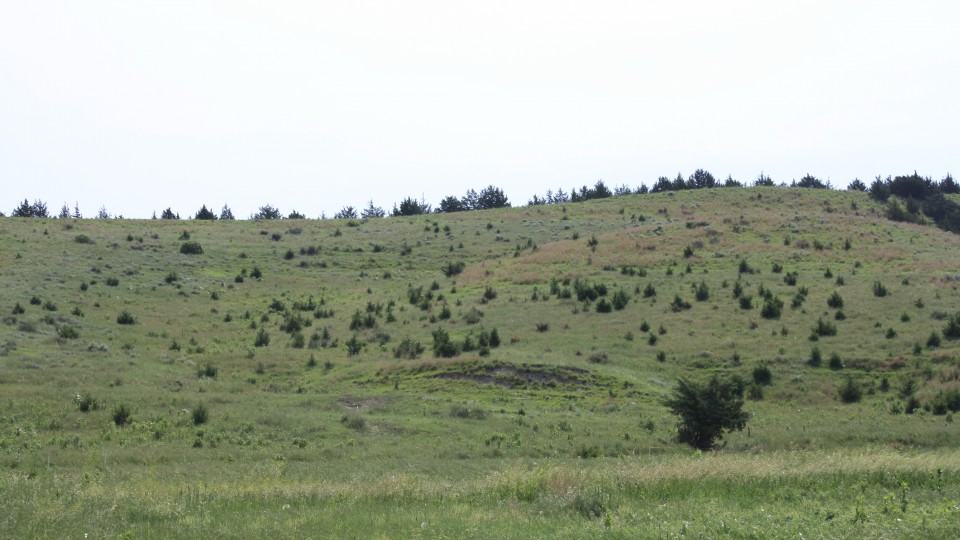
By Haley Steinkuhler | IANR
A new article authored by agronomy and horticulture students at the University of Nebraska-Lincoln indicates that the expansion of eastern redcedar into grasslands reduces grazing capacity and therefore could reduce funding available for public school education in Nebraska.
Eastern redcedar is a tree native to Nebraska. Historically, cedar windbreaks have been used around houses and as protection for calves and cattle from spring storms. However, eastern redcedar has been invading into areas where it was previously absent or rare. When this happens, it can threaten livestock production, grassland wildlife, water resources as well as public safety from wildfires.
Dirac Twidwell, assistant professor in the Department of Agronomy and Horticulture and contributing author on the report, said that in multiple regions of the Great Plains a 75 percent reduction in livestock potential has been observed once grassland is fully converted to juniper woodland. In response, the Nebraska Cattleman’s Association recently identified eastern redcedar as “an increasingly serious ecological and economic issue.”
“As a rare plant, eastern redcedar has benefits, but plantings serve as a way for cedar trees to expand into new environments,” Twidwell said. “Once eastern redcedar trees become widely dominant, society bears the consequences, even in terms of funding available for public schools.”
Over the past six years, the School Land Trust, known formerly as the Board of Educational Lands and Funds, has increased spending to control eastern redcedar from $175,000 to $400,000 annually. The School Land Trust serves as a trustee of the lands contributed to the state in 1867 by the federal government. The School Land Trust, the largest landowner in the state, receives no state funding, pays county real estate taxes and all of its net revenue goes to K-12 public schools.
The trust owns and manages nearly 1.26 million acres of agricultural land in Nebraska. More than 950,000 acres of trust land are grasslands that generate income for public schools from grazing leases. In the last 15 years, the trust has contributed $573 million to K-12 public schools in Nebraska.
To limit major economic losses resulting from eastern redcedar invasion on their land, the board is proposing to stop planting cedar trees and to remove existing seed sources, like windbreaks or female trees. The trust, like other landowners, also is increasing steps to control cedar from spreading. Removing the source of the problem and finding long term methods of controlling the spread of eastern redcedar onto grazing land is a key priority of the School Land Trust. By controlling the spread of eastern red cedar, the School Land Trust will maintain profitable grazing leases and revenue can focus on its intended purpose of funding K-12 public schools.
The article urges Nebraskans to become informed of the consequences of the spread of eastern redcedar. In 2014, the Nebraska Conservation Roundtable, consisting of multiple state, federal and university experts, listed eastern redcedar as one of the greatest threats to natural resource conservation in Nebraska.
The article, which has been released in Nebraska Extension's BeefWatch, was authored by students in the ecosystem monitoring and assessment course, along with Craig Allen from the Nebraska Cooperative Fish and Wildlife Research Unit. The Nebraska Board of Educational Lands and Funds also provided input. For more information, click here.
Read the article
Eastern Redcedar Invasion Threatens Funding for Nebraska’s Public Schools
More details at: http://beef.unl.edu/beefwatch